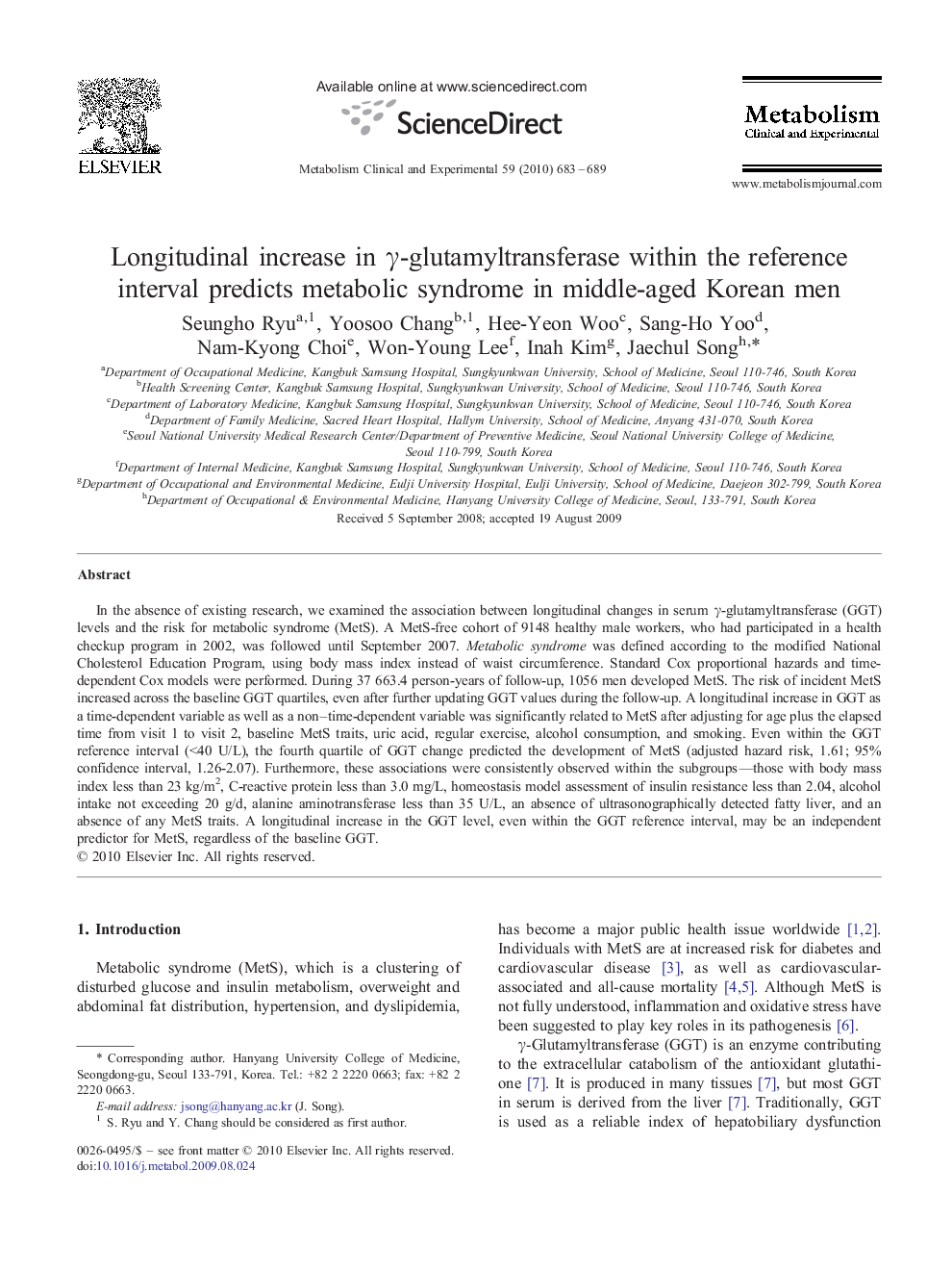| کد مقاله | کد نشریه | سال انتشار | مقاله انگلیسی | نسخه تمام متن |
|---|---|---|---|---|
| 2806582 | 1157125 | 2010 | 7 صفحه PDF | دانلود رایگان |

In the absence of existing research, we examined the association between longitudinal changes in serum γ-glutamyltransferase (GGT) levels and the risk for metabolic syndrome (MetS). A MetS-free cohort of 9148 healthy male workers, who had participated in a health checkup program in 2002, was followed until September 2007. Metabolic syndrome was defined according to the modified National Cholesterol Education Program, using body mass index instead of waist circumference. Standard Cox proportional hazards and time-dependent Cox models were performed. During 37 663.4 person-years of follow-up, 1056 men developed MetS. The risk of incident MetS increased across the baseline GGT quartiles, even after further updating GGT values during the follow-up. A longitudinal increase in GGT as a time-dependent variable as well as a non–time-dependent variable was significantly related to MetS after adjusting for age plus the elapsed time from visit 1 to visit 2, baseline MetS traits, uric acid, regular exercise, alcohol consumption, and smoking. Even within the GGT reference interval (<40 U/L), the fourth quartile of GGT change predicted the development of MetS (adjusted hazard risk, 1.61; 95% confidence interval, 1.26-2.07). Furthermore, these associations were consistently observed within the subgroups—those with body mass index less than 23 kg/m2, C-reactive protein less than 3.0 mg/L, homeostasis model assessment of insulin resistance less than 2.04, alcohol intake not exceeding 20 g/d, alanine aminotransferase less than 35 U/L, an absence of ultrasonographically detected fatty liver, and an absence of any MetS traits. A longitudinal increase in the GGT level, even within the GGT reference interval, may be an independent predictor for MetS, regardless of the baseline GGT.
Journal: Metabolism - Volume 59, Issue 5, May 2010, Pages 683–689